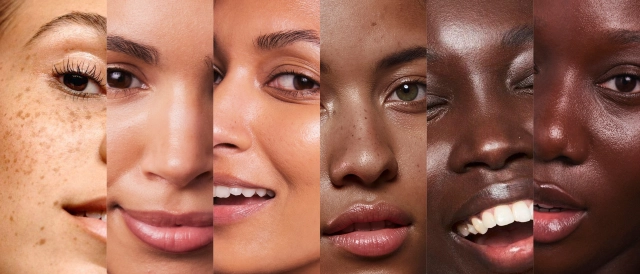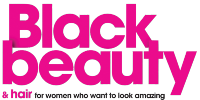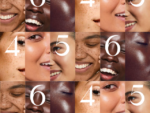Skincare brand 4.5.6 SKIN explores the gap in skincare research equity and finds that there is a lack of research, innovation and funding for products specially formulated for darker skin tones

With the new Texture Gap Report 2023 bringing to the forefront of how Type 4 consumers are being left behind by the industry, now is the time for a wider conversation about the research equity gap across the skincare industry too. 4.5.6 Skin created the world’s first skin tone research laboratory after recognising the gap in skincare research equity. Here is what you need to know about the Gap!
4.5.6 Skin’s 10 Steps to Understanding Skincare Inequality
1. Research shows numerous structural and functional differences in darker skin tone that go beyond colour. There isn’t a one size fits all approach to skincare.
2. People with darker skin tones represent 40% of the world population and deserve products that specifically target their skin’s needs.
3. 60% of women of colour interested in 4.5.6 Skin said they don’t understand how to care for their skin and 60% of dermatologists are unable to diagnose and treat patients with darker skin tones. Medical textbooks fail to reflect diversity (only 4.5% of images are diverse), which only undermines education even more.
4. The industry is focused on the skin priorities of lighter skin phototypes I, II and III. 70% of the skincare industry focus is anti-ageing – which is the top priority for of lighter skin phototypes I, II and III. 90% of women of colour interested in 4.5.6 Skin said their top priorities are healthy glow and even skin tone.
5. The regulatory testing system is based on Fitzpatrick I, II and III and has not evolved. Crucial patch tests are all based on white skin, despite irritation and inflammation appearing differently and causing problems in darker skin.
6. According to the FDA and EU, drug trials for topical medications should include a spectrum of skin tones. For various reasons, clinical trials tend to include people with lighter skin tones. Less than 1% of clinical trials are inclusive.
7. The increase in inclusivity across in the skincare industry in the past years has been heavily led by marketing and not necessarily by products. There remains a huge research equity gap.
8. 4.5.6 Skin created the world’s first skin tone research laboratory and are the only scientific team in the world to look beyond colour when it comes to skin tone.
9. 4.5.6 Skin’s ‘Science of Skin Tone’ philosophy and formulation approach factors in genetics, metabolic, pathological and psychological implications of skin tone.
10. The 4.5.6 Skin product range addresses not only skin type, but also the functional and physiological differences of skin tone.
✶ You may also like ✶
- Skincare Expert Answers Your Sun Care QuestionsWhy darker skintones will benefit from suncream!
- The D.O.R Beauty Edit Welcomes Okiki Skincare to Their PlatformBeauty platform welcomes Okiki Skincare
- 10 Steps to Understanding the Gap in Skincare Research EquityHere’s what you need to know about the Gap!
- Keep Radiant & Protected with Sunscreen for Darker Skin TonesRenude suggest the best sunscreens for deeper skin tones
- Expert Lists the 7 Skincare Ingredients to AvoidSkincare ingredients to avoid if you want a smooth complexion





